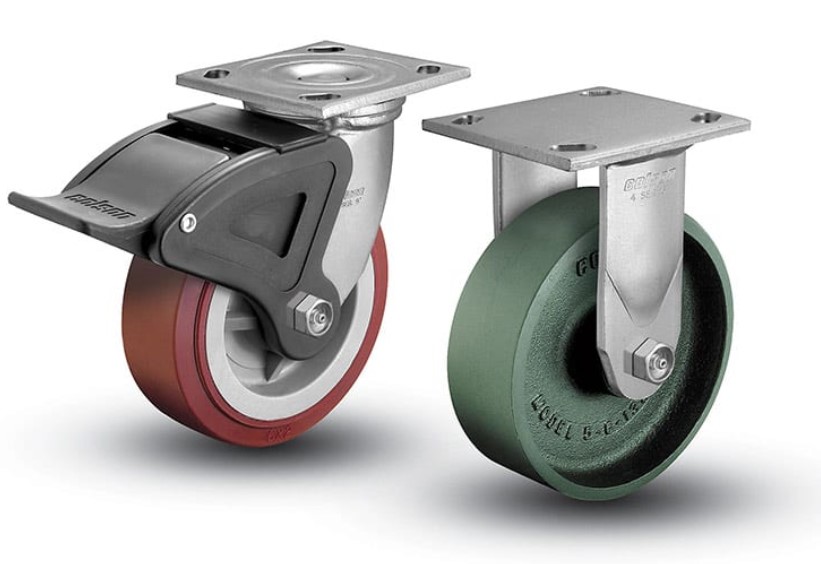

A caster wheel can support a lot of weight. But the question of how much weight a caster wheel can handle is quite tricky. This article will provide information about different casters types, including Light-duty, Heavy-duty, Office chair, and Swivel top plate casters. Once you understand these types of casters, you’ll be better equipped to choose the right ones for your needs.
Heavy-duty casters
Industrial carts and other large equipment require the sturdiest casters possible. Casters made of polyurethane, nylon, steel, and thermoplastic rubber are available in heavy-duty models. These heavy duty swivel caster wheels provide maximum support and strength. However, heavy loads falling off casters can cause serious injury to workers. It’s also a good idea to install brakes on your equipment to prevent floor damage.
Another consideration is the surface on which you plan to place your casters. If you’re setting up a home office, you’ll likely want to choose a pair of casters that can withstand a wide range of surfaces. For example, a heavy-duty set of wheels will best suit carpeted floors. Choosing the right team will help protect your feet from damage and ensure a smooth, worry-free work environment.
The weight capacity of a heavy-duty set of casters depends on how heavy the load is. Individual casters are rated for a specific weight capacity, but a group of heavy-duty casters can handle up to 250 pounds. Casters also feature 360-degree steering and brakes to ensure that each wheel is stable. While this capacity is practical, it’s essential to consider that not all surfaces are level. When it’s not, three wheels will bear the entire load.
Light-duty casters
The standard light-duty caster wheel is most commonly used for moving furniture and supporting appliances. Casters with decorative treads are also available for shelving units. Heavy-duty caster wheels are used in industrial settings, warehouses, and massive objects. You can check the load capacity of each type of caster by comparing them to the weight of the item to be moved.
Typically, caster load capacities are listed per wheel and this information helps you determine the right caster for your project and budget. You can also look for combined load capacity on a caster’s specification sheet or ask a caster expert. Then, once you have the wheel’s power, you’re ready to choose the best option.
Office chair casters
The most common type of casters for office chairs are twin vs. single. Twin casters create a wider rolling surface and help distribute weight more evenly, so the chair does not damage floors. Twin casters also swivel, offering better stability. Single-wheel casters are more durable, but they are designed for industrial use. Therefore, the optimal choice for office chairs is a twin-wheel caster.
The caster wheels are made of nylon, steel, or elastomers. Office chairs typically feature plastic casters, while industrial heavy-duty casters are usually metal. The wheels are attached to the base of the office chair via a stem that slides into the chair’s leg. The branch keeps the wheel securely in place while providing an easy gliding motion. Caster maintenance may include cleaning and greasing the bearings.
Swivel top plate casters
When choosing a swivel top plate, you should know the kingpin that holds the bearings in place and the overall load capacity. These are essential considerations for floor protection and mobility, as well as the type of environment that the casters are used. A swivel top plate wheel has a 70mm x 2″ plate that allows it to accommodate the maximum load weight while maintaining stability.
In addition to the top plate, this caster wheel also has a complete lock brake that locks both the wheel and the swivel at the same time. A trailing end brake is more convenient, as it makes contact with the wheel’s tread. The tread width is the maximum distance the tire can be spread parallel to its revolving axis and can hold up to 100 pounds.







